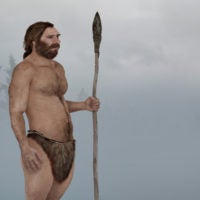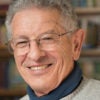Stanford scientists commemorate 50 years of a “famously obscure” field
Theoretical population biology – a field focused on mathematical modeling of biological phenomena – informs research in demography, ecology, evolution, epidemiology and genetics. One of the premier journals in the field, started at Stanford, celebrates its 50th anniversary.
Theoretical population biology is a field you’ve likely never heard of but the problems it tackles are familiar subjects within the natural and social sciences, medicine and public health. Combining biology and mathematics, it’s been used to address the passing of genes down through generations and of culture through communities, the relationships between predators and prey, the flow of diseases between populations and – most recently – our response to a globe-spanning pandemic.

Theoretical population biology is a field that informs research in demography, ecology, evolution, epidemiology and genetics. Mathematical models from scholars in this field can have broad applications – sometimes decades after they are first developed. (Image credit: Getty Images)
“When I read the news about epidemiological models describing the spread of the novel coronavirus and the projections about its potential trajectories, I see in the background the years of abstract mathematical models that have made it possible to produce the immediate, policy-relevant work that is happening now,” said Noah Rosenberg, the Stanford Professor of Population Genetics and Society and a professor of biology in Stanford’s School of Humanities and Sciences, who specializes in mathematical evolutionary biology and genetics.
The current models informing the COVID-19 pandemic response, for example, trace back to theoretical work conducted as early as the 1920s. Without always having specific diseases in mind, theorists have built abstract epidemiological models that distilled the essential relationship between populations of susceptible, infected and recovered individuals. Almost a hundred years later, this same framework is being customized for the coronavirus, which means adding subpopulations – like people who are asymptomatic or hospitalized – and disease-specific details, concerning exactly how these populations and subpopulations are related in terms of transmission and recovery rates.
“You’ll hear people in the news say, ‘Well, we’ve got to make R0 [pronounced R-naught] come down,’ but they probably don’t know the mathematics behind that number,” said Marcus Feldman, the Burnet C. and Mildred Finley Wohlford Professor in the School of Humanities and Sciences. “But now R0, which comes out of mathematical epidemiology, is a big deal. It’s amazing how these concepts gain currency at times like this.”
At the same time that these scholars are seeing the power of their field highlighted by the coronavirus pandemic response, they are also recognizing the 50th anniversary of the journal Theoretical Population Biology, which Rosenberg currently helms as editor-in-chief. The journal was established in 1970 by Stanford mathematician Samuel Karlin and Feldman – who had been Karlin’s student and who was the journal’s managing editor for 41 years. In the intervening years, theoretical population biology has grown in reputation and influence alongside advances in genetics, computing and data science.
Biology as math
Rosenberg describes theoretical population biology research as “replicating features of the world inside of a mathematical model.” Theorists dive into multidimensional natural systems and tease out the key players and relationships, and they predict the consequences of changes to the system. The resulting mathematical models represent the inner-workings of biology on a grand scale and sometimes create the architecture for future experiments, investigations and actions.
With the rise of big data and powerful computers, other quantitative sciences like statistics and computer science have joined mathematics in contributing to population biology. Unlike these other areas, however, which often begin from data and algorithms, theoretical population biology focuses on the mathematical assumptions and their consequences, working out the logical structure for how biological phenomena relate to each other. Its perspective can sometimes seem counterintuitive in the age of big data, but it’s key to understanding how biological systems work.
“In most biological systems, we have lots of information, and processing and organizing all that data may depend on very deep mathematical results. That’s why this field exists,” said Shripad Tuljapurkar, the Dean and Virginia Morrison Professor of Population Studies and professor of biology at Stanford.
One theory about cooperation, for example, could describe processes happening in both people and cancer cells. Mathematical models that underlie inferences about the relationships between populations of humans (or other organisms from which samples of DNA or RNA have been taken) allow investigators to develop hypotheses about how these relationships came about. Kaleda Denton, a graduate student advised by Feldman, studies conformity – a bias in how individuals adopt cultural traits – which is a phenomenon that affects humans but also exists in fruit flies, fish and birds.
“All the time, people ask me about the ‘real-world application’ of my work and what’s exciting is that I don’t really know,” Denton said. “It’s really interesting to study something that is so broad, where the theory can be applied to many different areas of biology, but you don’t necessarily know how it will be applied.”
Work from this field often has a long legacy. For example, in the 1980s, Tuljapurkar developed formulas predicting population sizes in the distant future under conditions with year-to-year differences in growth rates. The formulas have become useful in the past two decades for population viability analyses in conservation biology, and demographic forecasting for retirement and social security planning. In the 1970s, Stanford faculty Luigi Luca Cavalli-Sforza and Feldman laid the groundwork for the subfield of cultural evolution – inspiring the original definition of “meme” (culture’s version of a gene) well before their theories would inform pressing research on the spread of information over the internet.
A way of thinking
Without knowing where their theories will ultimately lead, theoretical population biologists depend on their ability to sense broad patterns in biology and convert them into accessible models that will hopefully lead to deeper insights.
“Deciding what to study is like stepping into a stream where there are questions flying by, and you spot one where you think you can contribute to in some way,” said Tuljapurkar. “Sometimes a question fascinates you, and other times you can see that a phenomenon is clearly a statistical problem and it just needs to be figured out.”
Scholars who develop this theoretical mindset have an abundance of subjects they can choose to pursue, in theoretical and applied sciences, health or environmental policy, and economics.
“Work you do as a student gives you the germs of ideas and the right techniques to be able to solve a problem when it arises. Pursuing a specific problem then becomes a question of what issues excite you and what it is that you want to spend your time working on,” said Feldman. “It’s very personal.”
Despite the field’s long history, pervasive influence and growing popularity, it’s still relatively unknown. “It’s almost like the field is famously obscure, even within biology,” said Rosenberg. “One of our journal’s reviewers explained it well using a popular Beethoven anecdote: when a violinist criticized some of Beethoven’s string quartets his retort was, ‘Oh, they are not for you, but for a later age!’ Some of the science in this field has this flavor. But with the pandemic, we can now see that we are living in the later age.”
Related stories
To read all stories about Stanford science, subscribe to the biweekly Stanford Science Digest.



